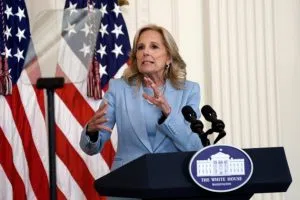(KNSI) — The Minnesota House passed the Paid Family and Medical Leave bill, guaranteeing all workers access to 18 weeks of paid leave for when they are ill, need to act as a caregiver for another family member or to welcome a child.
There is also a provision for up to six weeks of additional leave due to pregnancy-related complications for no more than 24 weeks in a single year. Under the federal Family and Medical Leave Act, workers in the U.S. can take up to 12 weeks of unpaid leave following the birth of a child or if the worker or a family member has a serious illness or injury.
Rep. Ruth Richardson authored the bill and says it creates a “statewide family and medical safety net for families and workers” and is “critical for our overall workforce development, retention, and economy.”
$380 million would be appropriated for the program immediately and then funded by a payroll premium tax on employers of .7% to raise $1.5 billion to keep the program going. That has groups such as the National Federation of Independent Business and the Chamber of Commerce worried, saying it would cost too much for small business owners and could potentially sink them.
It passed 68-64, with all Republicans and two Democrats voting no.
Rep. Dave Baker of Willmar agrees that paid family and medical leave is something that is widely supported and is something businesses of all sizes want to do for their employees, but it “mandates a new payroll tax that will impact everyone earning a paycheck in Minnesota and the massive government agency it creates is not something that Minnesotans are asking for.”
Republicans unveiled their own plan Tuesday without mandates and new taxes and instead offered tax cuts to incentivize employers to join the program and had a $5 a week opt-in should an employer choose not to join. Those amendments were not adopted. The House did give the OK for one Republican amendment for a reporting requirement to their county attorney if they believe someone fraudulently used the program.
The bill moves on to the Senate, which has its own version. It includes a 20 week cap with employers who offer their own leave program able to opt out and keep their benefits the way they are.
Should the bills merge and be signed into law, the benefits would go into effect in July 2025.
___
Copyright 2023 Leighton Enterprises, Inc. All rights reserved. This material may not be broadcast, published, redistributed, or rewritten, in any way without consent.










